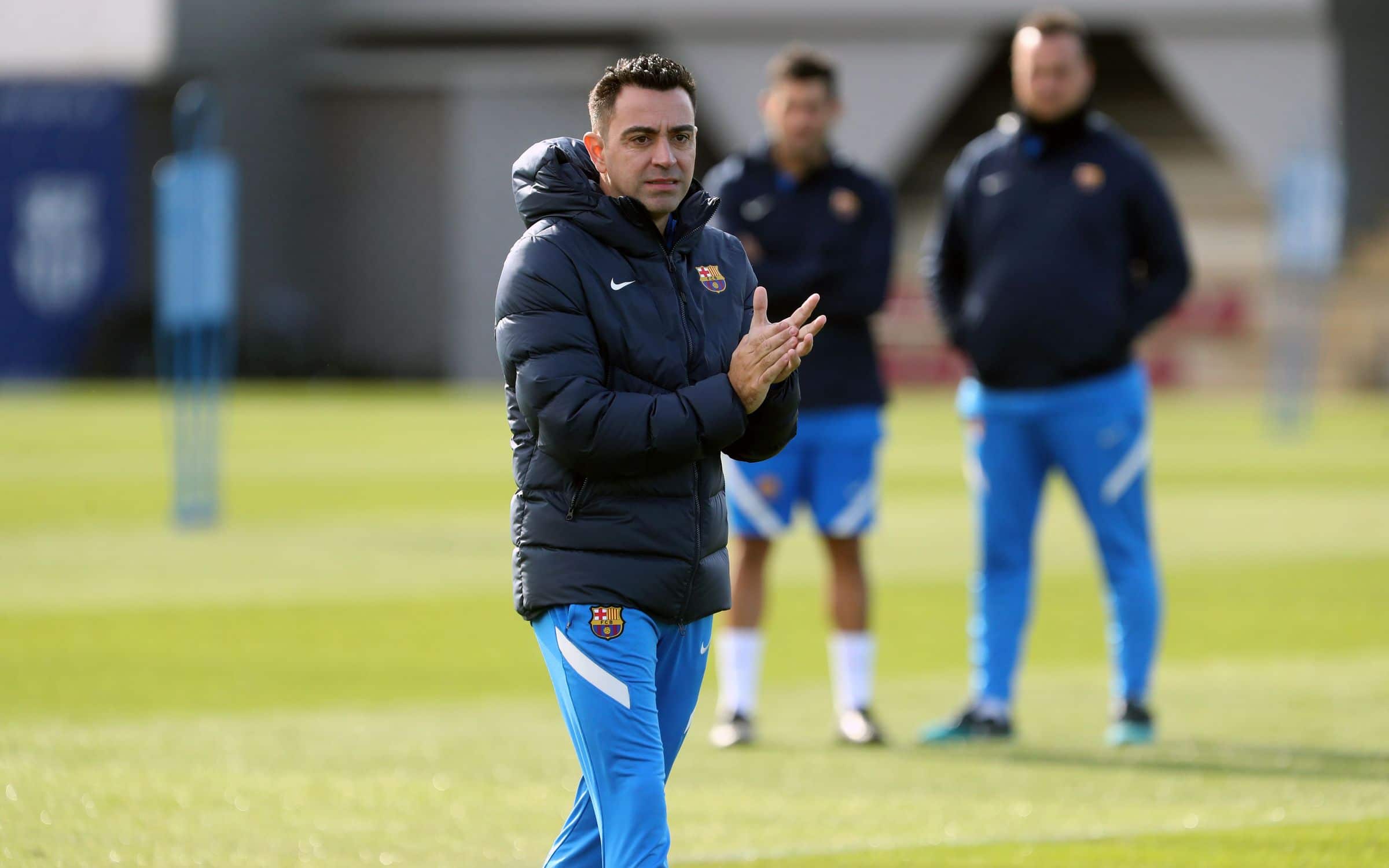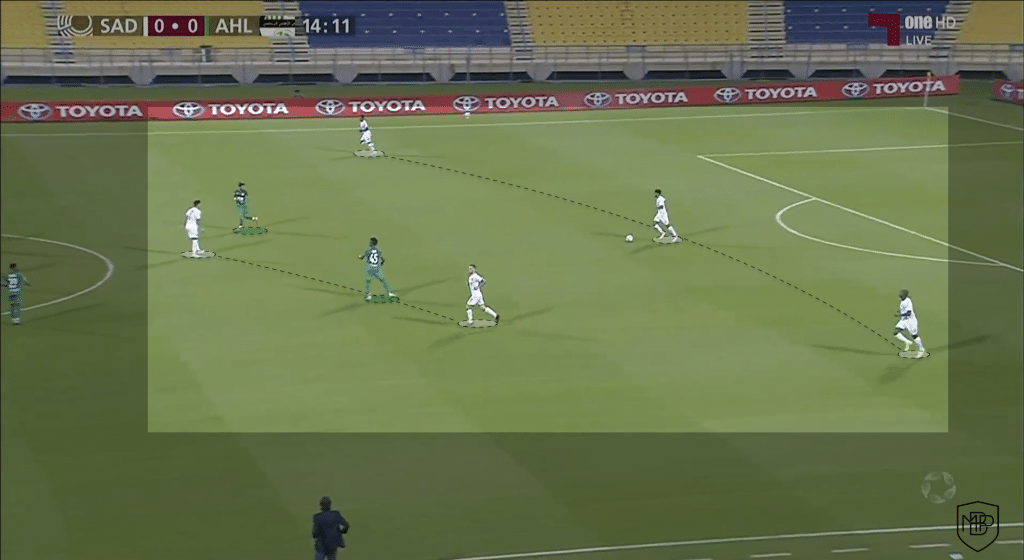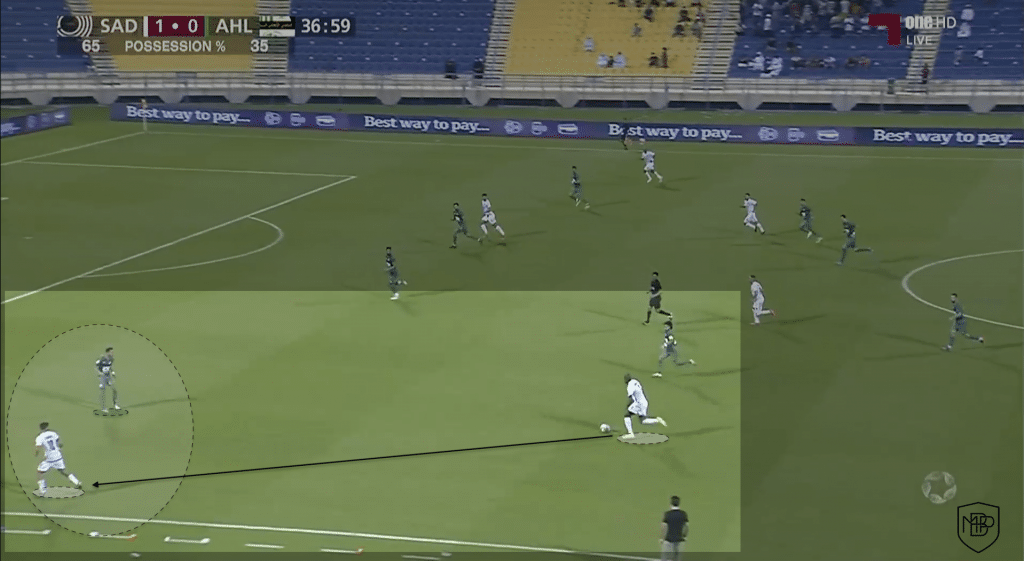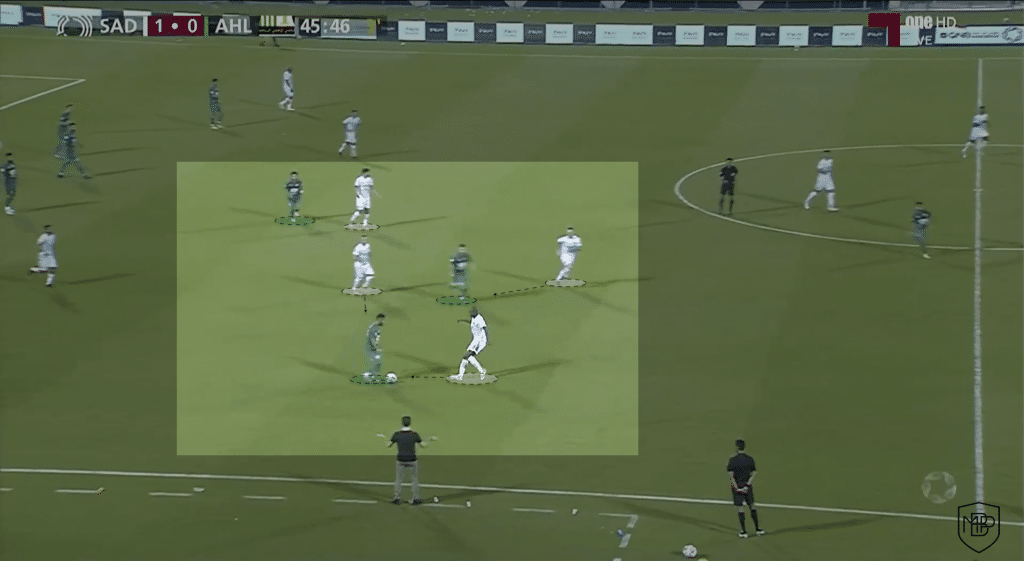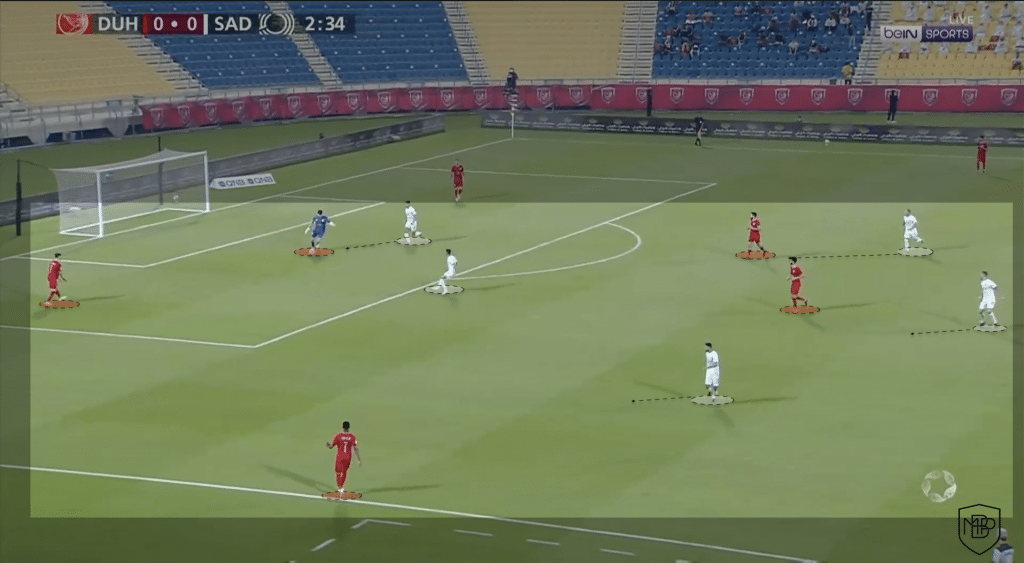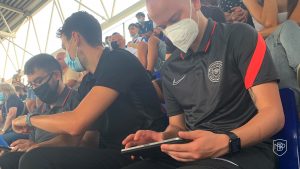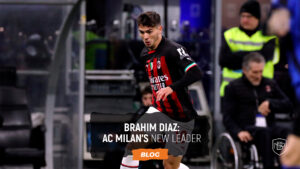The great Germany physicist Albert Einstein once famously said “in the middle of difficulty lies opportunity”. Xavi Hernández thought so too. The legend who was once the greatest exponent of FC Barcelona’s positional play has recently been appointed the new coach of the Catalan side, following the official departure of Ronald Koeman.
The ex-Blaugrana midfielder returns to take the reins of his boyhood team, but this time as the role of the head coach. The Terrassa-born club great will aim to reverse the negative momentum of the team, both in La Liga and the Champions League. In addition, he will also have the difficult task of restoring the enthusiasm of the Barca fans through the club’s iconic playing style, reminiscent of yesteryear.
Therefore, at the MBP School of Coaches, we are going to analyze the principles and sub-principles of the Game Model of his former team, Al-Saad, as we try to predict what behaviors we will see in Xavi’s new FC Barcelona side.
Tactical Analysis
Before going into the tactical analysis of Xavi’s Al-Saad, we must consider the context of the Qatari league and the fact that the player profiles that made up Xavi’s squad will be totally different from the current situation. However, we will be able to identify certain organizational and attitudinal behaviors that may be reproduced in the new Culé setup.
Organized Attack
The Qatari team were a side that focused its attacking phase on the possession of the ball. Whether it was during the build-up, the progression of the play or in the finishing zone, Al-Saad sought to generate imbalances in the opposition through the mobilization of the ball.
In the moments of build-up, and through a structural organization of GK-3+2. Xavi’s former team first looked to generate a positional and numerical superiority, which, through mobilizing the ball, allowed them to find the free man to overcome the opposition’s lines of pressure and position themselves in the opponent’s half. In addition, it was also common to see how the players located in the next line dropped deep to receive the ball, for the aim of attracting opponents and creating space for the striker to take advantage of it by using the interlinear intervals.
Once Al-Saad entered the progression phase, the objective was to search for situations of spatial advantage, either in the central channel or on the wing. To do this, the Qatari team would seek, through one of their three defenders, to progress with the ball in the central channel, in an attempt to generate numerical superiority by attracting opponents to the active zone. Once this was achieved, through the application of concepts such as playing with the ‘3rd man’, Al-Saad managed to move into the finishing zone.
If, on the other hand, the opponent prioritized the central channel by defending it with a high density of players, Xavi’s team would try to move the ball quickly and efficiently until they found positionally advantageous situations with one of their two wingers, who were always guaranteeing the team’s attacking width. From there, the side tried to create the finishing moment by crosses into the box where many of the players would attack into. Furthermore, they were also versatile in taking advantage of the imbalances provoked in the structure of the opposing team’s defensive line, using through balls to play in their attacking players.
Defensive Transition
In the moments of the attack-defence transition, the most common behavior of the Qatari team was to press immediately after losing the ball in the active zone. By travelling together when they were in possession of the ball, they were able to carry out this defensive concept with greater success.
In addition, while the players located in the zone of intervention performed this pressure, the players situated in more distant zones looked to defensively reorganize through diagonal recovery runs towards the central channel.
Organized Defence
In the defensive phase, Al-Saad aimed to recover the ball as close as possible to the opponent’s goal. To do so, the Qatari league champions often defended man-to-man, seeking to reduce the time and space in the opposition’s build-up.
However, if the opponent managed to overcome this initial press, Al-Saad organized itself with a GK-3-4-3 defensive structure, using a more zonal defence and directing the opposition towards zones where the team could press to win the ball back.
Attacking Transition
Once Al-Saad managed to win the ball back, the behaviors displayed were different depending on the defensive setup of the opposing team. However, the main objective of Xavi’s side was to keep possession of the ball, since, in case of not being able to take advantage of possible defensive imbalances, they sought to maintain the ball to set up the organized attacking phase.
Conclusion
Although the context of both teams is greatly contrasting, in this analysis we have been able to observe how Xavi’s game idea can meet the requirements of FC Barcelona.
To do so, Xavi will have to adapt certain organizational and attitudinal behaviors of his game model which he implemented at his former club, to the player profiles that make up the Catalan team, as well as the characteristics and demands of both La Liga and the Champions League.
Therefore, now it remains to be seen if the returning club legend can achieve the same successes at the Camp Nou as his former mentors, Johan Cruyff and Pep Guardiola, did.

